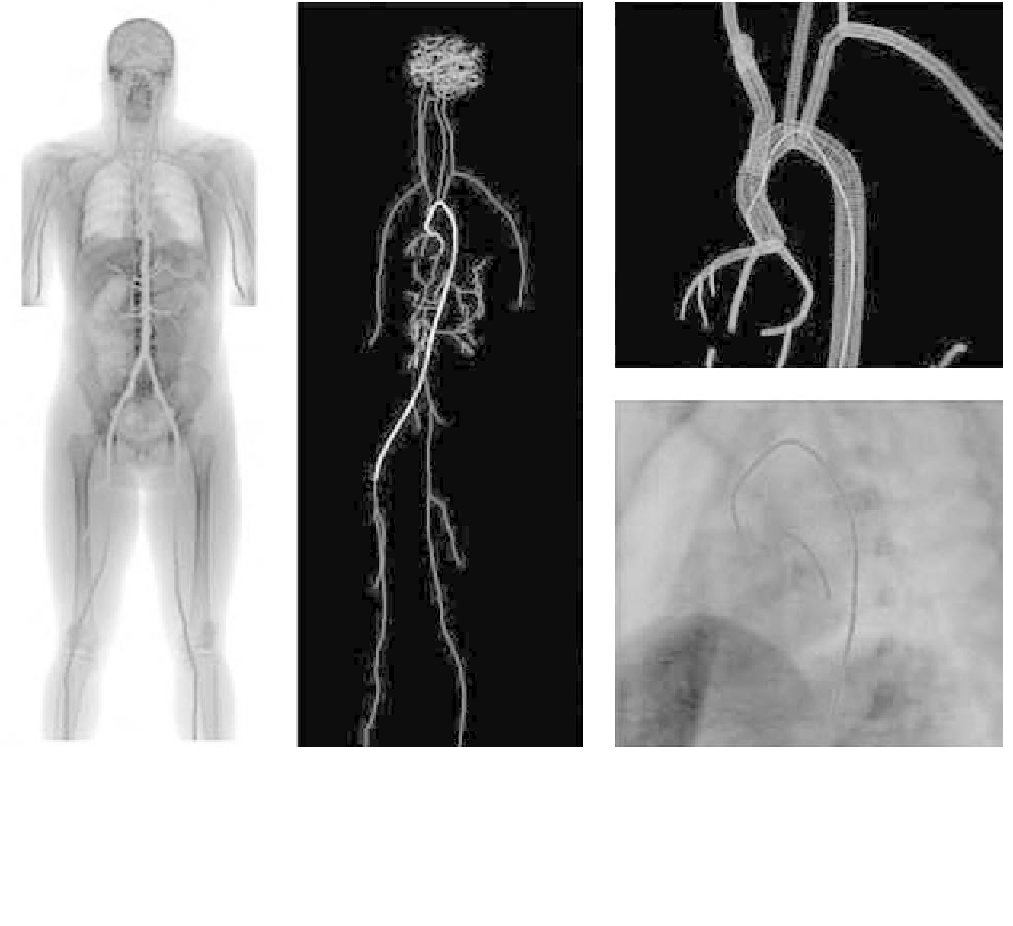Biomedical Engineering Reference
In-Depth Information
may be very difficult to know the exact spatial location of
the probe. Thus, it may be easier to get both the internal
view and the surrounding spatial localization information,
providing a ''road-map'' image
[37]
. The volume-
rendering technique used in this type of visualization
should address the strong perspective issues that are
encountered.
information obtained prior to the procedure are com-
bined to provide real-time guidance. Registration is an
important factor and speed is a major issue in this kind of
visualization due to real-time requirements.
Flow (vector) visualization
In volume visualization, generally the data at each
point in the volume lattice is a scalar quantity. Re-
cently, new MR imaging techniques that provide dif-
fusion images of water molecules produce information
that is a vector in each data point, and new types of
visualization techniques for such vector field data
become necessary. For instance, one approach would
try to produce continuous ''flow-field-lines'' through
the volume that follow the vectors in the 3D space.
Such visualization techniques present unique line pat-
terns that can help to identify sources, sinks, and
vortices in the volume of vector data (
Fig. 6.6-9
)
[33,
34, 38, 39]
.
Real-time visualization for image-guided
procedures
Recent advances in imaging techniques have made it
possible to acquire images in real-time during an inter-
ventional procedure (
Fig. 6.6-8
). During such pro-
cedures, usually, the real-time images themselves may be
sufficient to provide the necessary guidance information
needed for the procedure. However, there are instances
when that may not be sufficient and advanced visualiza-
tion becomes a powerful tool for guidance information.
Information acquired in real-time and more detailed
Figure 6.6-14 Real-time interactive surgical simulator. Finite-element-based modeling of the interaction of catheter and guide-wire
devices with the vascular structures of the human body. Visualization provides training and planning information through the simulated
fluoroscopic display. (Image courtesy of Yao Ping Wang, Chee Kong Chui, H. L. Lim, Y. Y. Cai, K. H. Mak, R. Mullick, R. Raghavan,
James Anderson.)





